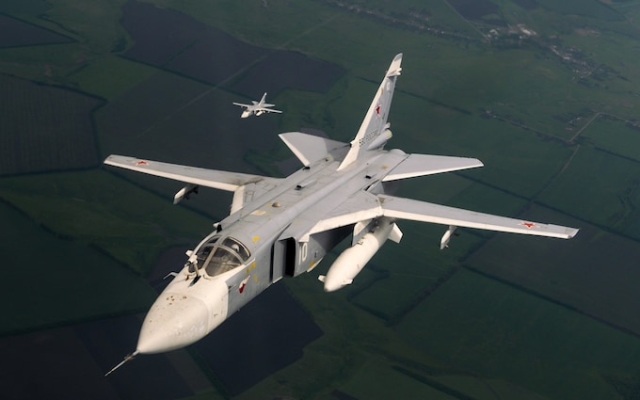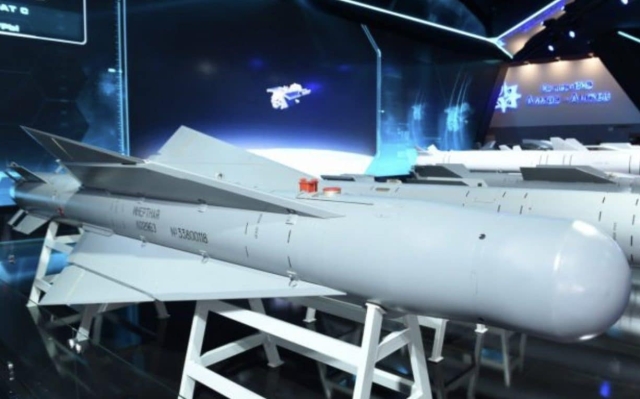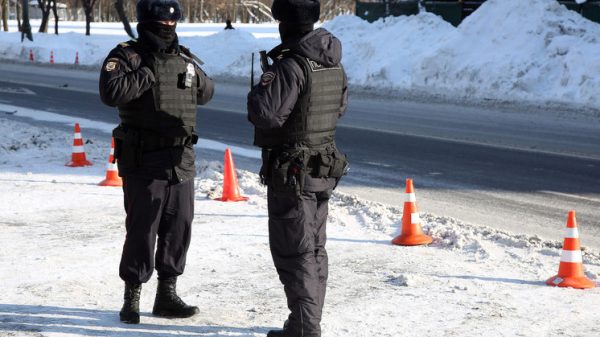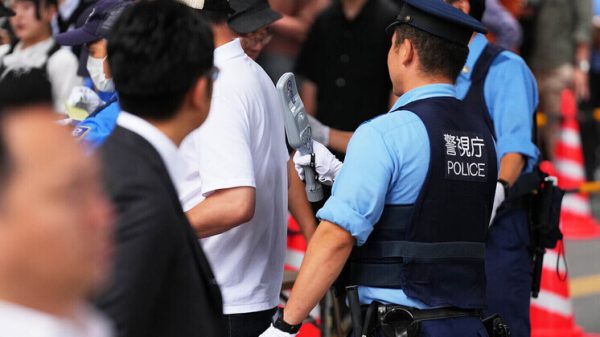 Russian Air Force Su-24M. The use of glide bombs had some early success. Photo: Universal Images Group Editorial
Russian Air Force Su-24M. The use of glide bombs had some early success. Photo: Universal Images Group Editorial
Flying over the northeastern border of Ukraine, 10 of the most advanced Russian fighter jets were about to launch weapons never before used in war.
11 so-called glide bombs dropped on the night of 24 March, confirmed reports that the Russian Air Force was adapting after it ran out of cruise missiles and failed to take control of the skies over Ukraine.
Glide bombs are equipped with «wings». to give them extra range and fly low enough and far enough to evade radar-controlled air defenses.
Russian glide bombs made headlines when a fighter jet accidentally dropped a bomb on the Russian border town of Belgorod, damaging buildings and injuring at least three people.
Colonel Yuriy Ignat, spokesman for the Ukrainian Air Force, told the Telegraph that the bombs pose a «very serious threat.»
The extra range of glide technology means Russian jets can avoid risky sorties near the front line for firing ammunition.
“Currently, the enemy uses tactical aviation to solve combat missions along the border with Russia, the front line and the sea coast. In all these areas, the enemy has been intensively using glide bombs for about a month now,” Colonel Ignat said.
Russian glide bomb 2
Ukrainian officials estimate that Moscow forces are dropping at least 20 glide bombs a day on the battlefield.
As the world awaits Ukraine's expected counter-offensive, Ukrainian and Western analysts have begun to speculate that the introduction of these weapons could force Kiev to make last-minute changes to its operational plans.
The most basic glide bombs are modified weapons, equipped with wings and navigation systems that allow you to set the flight path to the target.
It can be as simple and crude as reworking an unguided weapon, when the Russians are basically repairing an old Soviet FAB-500 antenna. bombs.
However, some glide bombs, such as the UPAB-1500B-E, are specifically designed with these features in mind.
0405 UPAB-1500B
The cruise bombs, which are cheaper and easier to manufacture than ballistic and cruise missiles, appear to be became the weapon of choice for Russia as it reportedly ran out of more high-tech precision-guided munitions.
The specifications and capabilities of each gliding weapon — whether modified or manufactured — vary widely, with some reportedly having ranges of up to 75 miles and being capable of hitting a target within a 10 meter radius.
But it is most commonly thought that that the glide bombs used by Russia have a range of 30 to 45 miles.
Regardless of the effectiveness of the bombs, these weapons give Russian fighter pilots the ability to effectively use air power to influence ground operations in a way they used to struggled to achieve.
Intelligence gathered by Ukraine shows that most glide bomb attacks are carried out from 25 to 30 miles deep into Russian territory, after which military aircraft turn around to avoid Kiev's air defense range.
«New improvised weapons create countermeasures , which means that the air defense threat, which previously limited the use of strike and ground attack aircraft, is somewhat reduced,” Justin Crump, a military analyst at the intelligence consulting company Sibylline, told the Telegraph.
Russian Glide Bomb 1
As Ukraine is shedding its stockpile of Soviet-era air defense systems, Kiev is left with only a handful of medium- and long-range systems to defend against air attacks.
< p>Most of its short-range air defense systems are on forward, and longer-range missile systems are deployed far behind the front lines to defend cities and keep them out of the reach of Russian artillery and drone attacks.
In recent weeks, Russia has again ramped up its long-range attacks, using Iranian-made suicide drones and ballistic and cruise missiles against cities like the capital Kiev, in hopes of depleting Ukraine's air defenses. missiles.
“Why would they use scarce ballistic cruise missiles, of which they have few left? This is the cheaper option. That's why they use glide bombs or S-300 surface-to-air missiles,” Colonel Ignat said about glide bombs.
“We can sometimes intercept S-300s, but these bombs are a problem.”
Harder to track
Western military experts say glide bombs provide less radar output than long-range conventional weapons, making them harder for Ukraine to track.
Radars do not always detect objects flying at low altitude and planning bombs' their small size makes them harder to spot on radar.
The electronic jamming and counter-radar technologies deployed by the Russians mean Kiev forces only have a limited window to target the bombs as they unmask.
The attacks also raise questions in Kiev about whether air defense systems should be withdrawn from populated areas to support the upcoming counteroffensive.

One solution would be to hit incoming glide bombs with a Patriot or other anti-aircraft missile systems.
But these SAM systems are valuable, their missiles are expensive, and they need to be kept away from the front lines, so they are not vulnerable to Russian strikes.
With Patriot systems that were donated by the US and the Netherlands, Ukrainian forces also have the opportunity move more air defenses to the front lines. .
The best solution, according to Colonel Ignat, would be modern Western fighters — for logistical reasons Ukraine favors the F-16 — that have longer range radars and air-to-air missiles than Ukraine's aging Su-27s and MiG-29s. currently.
«One or two would be enough to hold them off, because the Russians would see a couple of these things in the air and they would avoid approaching,» he said.
However, Western fighter jets donate to help level the playing field. UPAB-1500B Glide Bomb . Their use could force Ukraine to rethink its forward strategies.
UPAB-1500B Glide Bomb . Their use could force Ukraine to rethink its forward strategies.
For now, Kiev will have to plan its offensive to avoid being destroyed by the presence of Russian glide bombs.
Ukraine will need «significant amounts of air 'defences' on the front lines when its forces encounter bottlenecks such as river crossings or well-fortified Russian positions, where they become vulnerable to air attack, according to Mr. Kramp.
If Russia manages to gain a foothold in the battle for air supremacy, it will also mean that Ukrainian troop rally points, as well as control and rear nodes, will become equally vulnerable.
Ukraine will have to master the art of deception and warfare with high mobility in order to weaken any potential air threat posed by the forces of Moscow.
“This means, for example, dispersing troops widely when they are not in combat, but being able to transfer them if necessary, they quickly unite — this the British and US military have learned many times in recent exercises,” Mr. Crump said. “Scattering and rapid concentration of forces is vital in this environment.” , glide bombs deployed by Russian forces are not a silver bullet and will play a limited role in the coming offensive if Kyiv can maintain its air defense system on the front line.
“This is old technology. it's been around for years. Only in the last month they began to use them more intensively,” Colonel Ignat said.



















































Свежие комментарии